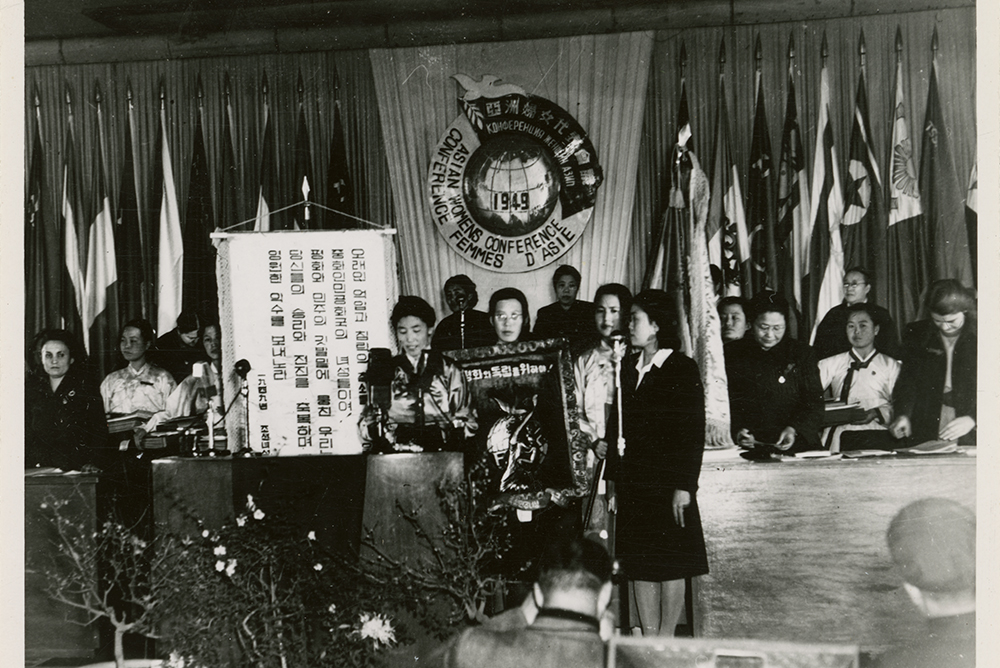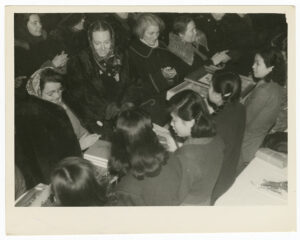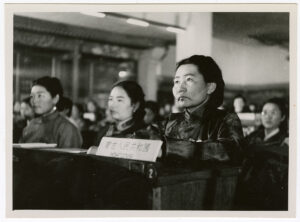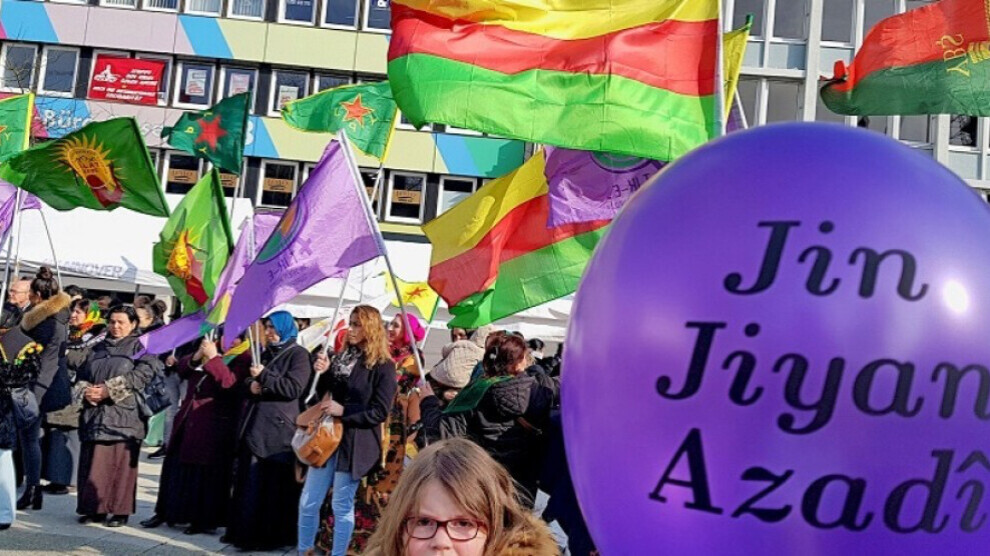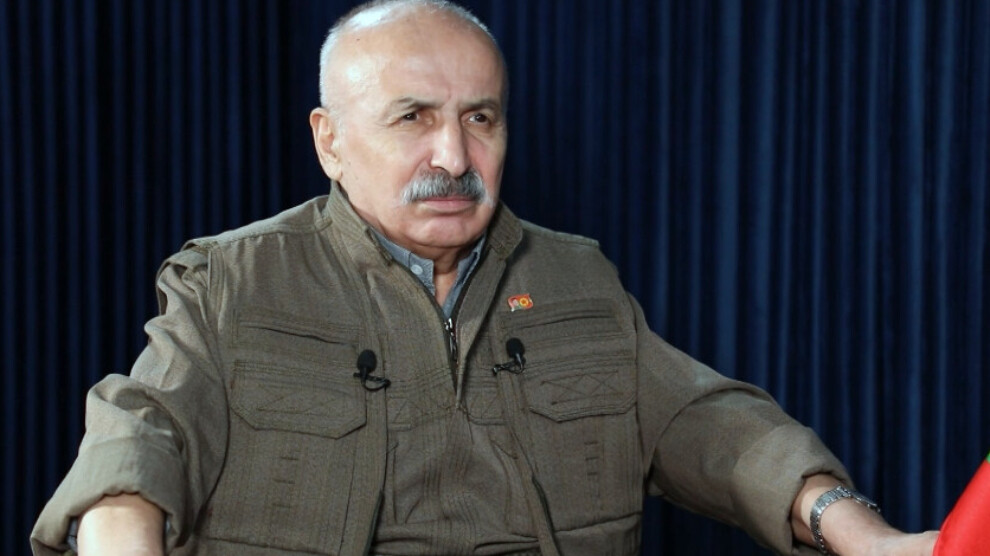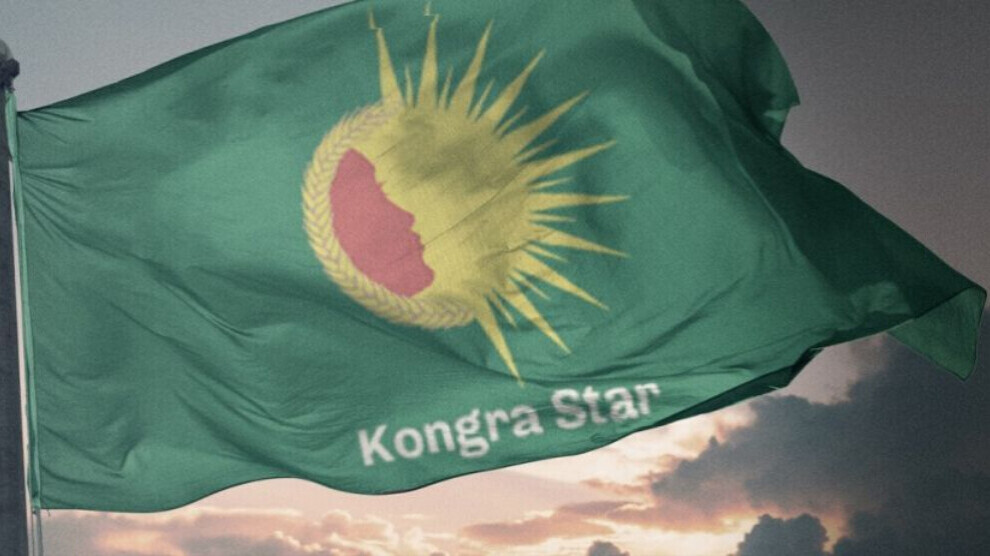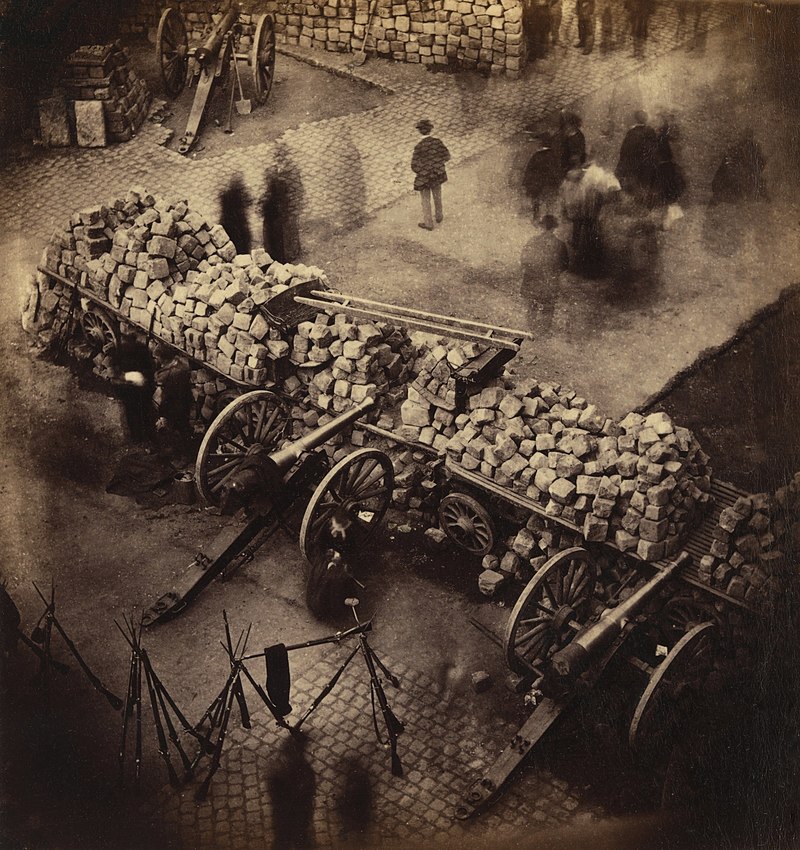
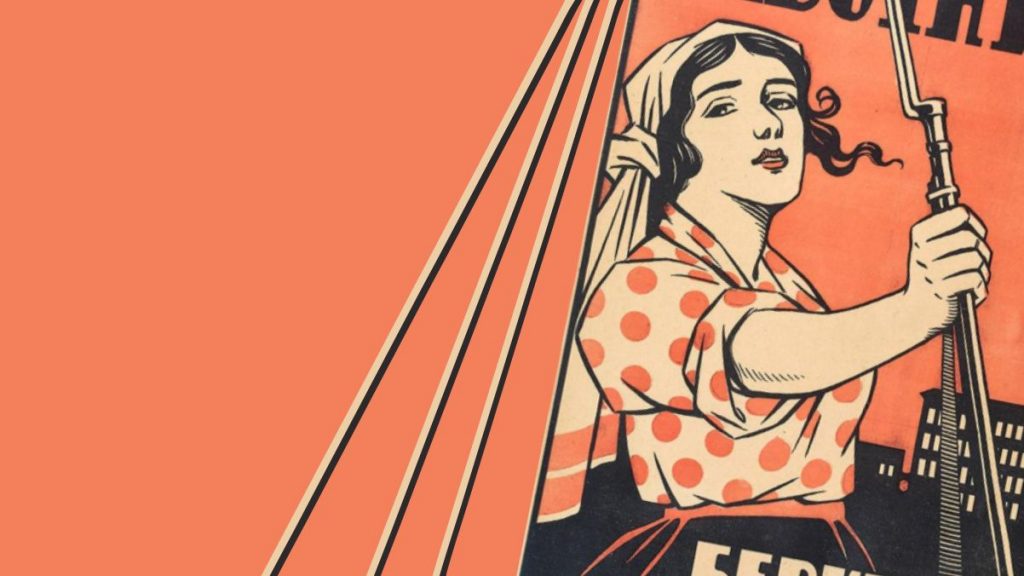
The Communist Women’s International, in English for the First Time
Josefina L. Martínez
July 11, 2023
An Interview with historians Daria Dyakovona and Mike Taber about their new book with documents from the Communist Women’s International
In January 2023, The Communist Women’s Movement, 1920-1922 was published in English by Brill. A paperback edition will be coming in November from Haymarket Books. The book brings together reports, manifestos, and resolutions of the Communist Women’s Conferences, which took place in those years. The work of more than 600 pages, compiled and edited by Mike Taber and Daria Dyakovona, is the product of research, translation, and editing from the Soviet archives.
The book includes minutes and resolutions of the International Women’s Secretariat and the International Conferences of Communist Women, including the First Conference of Communist Women (July–August 1920), the Second Conference of Women (June 1921), the Conference of Women Correspondents (January 1922), the Second Conference of Women Correspondents (October 1922). It also groups together texts that have been hitherto almost unknown, such as those of the Women’s Conference of the Near East (1921), in addition to texts of communist women’s conferences in Germany, Czechoslovakia, France, Bulgaria, the Dutch East Indies, and Soviet Russia.
These texts bring us closer to the debates that took place among the Communist leaders of different countries over successive meetings, in which they aimed to organize the women’s movement under a socialist and revolutionary perspective. They constitute a contribution to discussions of revolutionary feminism for those who want to know its history, and they serve as reflections on the challenges of the present.
A few days ago, our sister groups in Argentina and Brazil released the book Mujeres, revolución y socialismo (Ediciones IPS) / Mulheres, revolução e socialismo (Edições Iskra) simultaneously in several countries. This new publication, which gathers Marxist writings on women’s emancipation, has similar goals as The Communist Women’s Movement, making it a particular pleasure to interview and exchange ideas with Mike Taber and Daria Dyakovona.
I want to congratulate you on the book. It is a very interesting work. Tell us about the research and editing process. There are writings that were previously unknown; they are findings from the archives. Why publish a work like this today?
Mike: The early Communist women’s movement is virtually unknown today. Even most socialists are unaware of its existence. But as the first truly international revolutionary organization of women, it deserves to be recognized both as a pioneer in the fight for women’s emancipation and as a dynamic force in the Communist International (Comintern) under Lenin. We hope that our new book will help restore the CWM to its legitimate place in history.
Eighty to 90 percent of this volume appears for the first time in English. And the largest single item — the proceedings of the Second International Conference of Communist Women in 1921 — has never appeared before in any language. Typed transcripts of the conference proceedings in German, Russian, and English were obtained by Daria from archives in Moscow, where they had been collecting dust for a century. In preparing these transcripts for publication, we used the English version to a large extent, but it was carefully checked and heavily edited against the Russian and German versions.
Other items in the book were translated straight from Russian or German. A number of German-language items were published originally in Die Kommunistische Fraueninternationale (KFI), a journal published in Berlin under the editorship of Clara Zetkin. The KFI was one of the most well-written, lively, independent-minded, and far-reaching publications of the entire world Communist movement at the time.
Our volume shows readers another side of the early Communist International. It also provides valuable insights into the 150-year history of the Marxist movement with regard to the fight for women’s emancipation.
Daria: The book also includes a section on the CWM around the world, which brings together articles from the KFI on specific activities and campaigns of revolutionary women in different countries, mostly in Europe but also in Asia. We thought it would be valuable for readers to learn about the situation of women workers in different countries and the particularities of Communist work there. Another important piece in the book is the report of the 1921 Near East Women’s Conference held in Tiflis (today’s Tbilisi, Georgia), where the specific situation of “women of the East” was discussed. I can already see that this topic is of great interest not only to Marxists and feminists, but also to scholars and all those who are interested in Asia, Islam, and women’s participation in public life in historical perspective.
Daria, in the introduction, you point out that the Communist Women’s Conferences took as an example the work done by the Zhenotdel, or the Women’s Department of the Communist Party of the Soviet Union. What do you point out about it?
Daria: The Zhenotdel appeared in August 1919, one year before CWM was founded, under the leadership of Inessa Armand and Alexandra Kollontai. The latter would also become a prominent leader of the international movement. But Kollontai was also immediately after the revolution elected People’s Commissar for Social Affairs within the Soviet government, and in this capacity initiated the revolutionary Soviet legislation that would change the lives of women. Women were recognized as equal to men, and equal pay for equal work was guaranteed to them. Marriage became secular, and divorce was legalized on demand for both men and women. The category of illegitimacy of children was abolished. The Soviet state legalized abortion, which was provided free of charge in state hospitals. At the same time, new decrees introduced paid maternity leaves, public childcare, and schooling, as well as public services that lightened the burden of housework. It is based on this quite ahead-of-its-time legislation that the newly formed Zhenotdel started its activities to further advance political, economic, and social rights of women.
In the early 1920s, the Zhenotdel participated in a whole range of activities that women belonging to different social layers could identify with. It set up public canteens, laundries, nurseries, and kindergartens. It ensured recruiting of women into workplaces and helped to organize unemployed women into cooperatives. It led fruitful campaigns against famine, homelessness, illiteracy, domestic abuse, hooliganism, prostitution, epidemics, and much more.
Mike, in the prologue you point out five major achievements of the Communist women’s movement in its first three years of existence. What can you comment on these?
Mike: What comes through clearly in this book is the multifaceted character of the Communist women’s movement and its activities during the years 1920 to 1922:
It educated around women’s oppression through its journals and activities. This effort served to win women to the Communist movement, as well as to educate both male and female Communists around the issue.
It worked to develop women as fully rounded cadres, building their self-confidence and leadership abilities.
It organized sections or departments within parties devoted to this work, with an important degree of autonomy and independent initiative. These were not “women’s caucuses,” however, and Communist men sometimes participated in them.
It built a formidable team of female Communist leaders around the world, and it served as a vehicle for collaboration between them. Its central figures — Zetkin, Kollontai, and Armand — were outstanding Communist leaders who often fail to get the recognition they deserve.
It organized international political campaigns and encouraged Communist involvement in fights to defend women’s rights, from the right to vote to the right to choose abortion.
The significance of the CWM’s record grows even more in light of the fact that these accomplishments were made in face of resistance from many men in the Communist movement. But Communist women had the support of central Comintern leaders, such as Lenin, Trotsky, and Zinoviev. One can see the real progress that was made over the three years this book covers.
The first women’s conference was held simultaneously with the Second Congress of the International. What were the expectations at the time? What were the main issues under discussion?
Daria: The First Conference of Communist Women was organized in the summer of 1920. The Second Congress of the Comintern was held at the same time, and was perhaps much more significant and vaster in terms of participation and discussions than the founding 1919 gathering. For the revolutionary women, it was the first occasion to get together as an international socialist but also women’s emancipation movement. All the delegates at the conference insisted on the link between the end of capitalism and women’s liberation.
The First Conference elaborated its program drafted by Zetkin — the “Guidelines for the CWM.” The movement was to encourage the equal participation with men in all spheres of life — social, political, economic, and cultural — but also in the actual revolutionary fight. Despite the universalist character of the CWM, its “Guidelines” encouraged the use of specific strategies depending on where the work among women was to be carried out: in socialist, capitalist, or precapitalist countries. For socialist countries, Communist Women insisted on the importance of permanent and relentless struggle aimed at improving the lives of women and effectively enforcing their rights. For capitalist countries, the guidelines encouraged educational work among women, struggle for universal suffrage, and participation in national and municipal governments; the fight for the right of women to equal, unrestricted, and free education; the fight for equal pay for equal work by men and women; the fight for social aid for pregnant women, mothers, and children; fight for reform of housing and health care systems; and transformation of housing into a social industry. In countries still at a precapitalist level of development, the guidelines urged women in the first place to fight to overcome the prejudices, morals, practices, and religious and legal rules that reduced women to men’s slaves at home, at work, and sexually.
The second conference was much bigger, albeit in a different political context. What do you highlight from it?
Mike: The CWM’s second conference in 1921 showcased a vibrant, living movement grappling with the challenges before it.
The conference was a freewheeling affair that included lively debates on issues such as women’s suffrage, the relative weight of working women and housewives, and how fights around specific issues (called “partial struggles”) fit into the overall working-class battle against capitalism.
There were also frequent observations and complaints at the conference about women’s status within the Communist movement, and about prejudices they encountered on the part of some male Communists. Many delegates spoke of the need to confront these prejudices, and how best to do so. Perhaps that’s one reason why the proceedings of this conference were not published at the time — unlike just about every other major Comintern gathering during this period. One can speculate as to whether this conference made a few male bureaucrats nervous and uncomfortable!
At this second women’s conference, debates of the Third Congress were also expressed, on the question of the united front or the “revolutionary offensive.” Zetkin defended the same position as Lenin, but not all the delegates held that position, did they?
Daria: The Second Conference was held in the summer of 1921 and indeed in a different political context from 1920. After the failed revolutionary uprising in Germany in March 1921 (usually referred to as the March Action), the conference, like the Third Congress of the Comintern, featured a debate between the adherents and opponents of the “revolutionary offensive.” The adherents of the policy, including the KPD leadership and many of the German women delegates at the CWM conference, supported the failed March Action in Germany and believed that Communists all over the world should start uprisings even if not supported by proletarian masses. Zetkin, like Lenin and many other Comintern leaders, was one of the sharpest critics of this vision. This ideological division found its way into the debates of the Second Conference, and Zetkin was personally attacked. Passionate debates between the adherents of the two contrasted visions of the path to be taken by the workers also characterized the discussions of methods of work among women, including such questions as the participation of Communists in the general women’s fight for equality and cooperation with liberal feminists as well as the base of the CWM.
I am particularly interested in the debates on work among women in the East. What were the main contributions on this issue?
Daria: The agitation, organization, and education work among the “women of the East” had been on CWM’s agenda since its foundation. Eastern women were considered the most oppressed representatives of the female sex, their social and material conditions — the hardest. In 1921, the CWM established the Woman’s Secretariat for the Near East, which was to coordinate work in Western Asia and Turkey. On December 12, this secretariat held a women’s conference in Georgia. The CWM’s policy on women of the East involved flexibility and sensitivity toward the conditions of life and cultural contexts that these women had to face. Communist Women understood that work among women in the East could not be carried out in the same way as in capitalist countries. In the early 1920s, the accent was put on Eastern women’s grassroots initiatives and cooperation between women belonging to different, including nonproletarian, layers in a united-front perspective. The major goal of such an approach was to attract women into cooperatives and workshops that liberated them economically and could also be used as spaces for agitation. Communist women also helped in setting up the infrastructure that would make “women of the East” integrate into social life: workshops, schools, kindergartens, children’s homes, public dining halls, laundry rooms, libraries, reading rooms, etc.
Mike, you point out that, from 1924 to 1926, the communist women’s movement declined. How does this relate to the consolidation of Stalinism in the USSR and in the Comintern?
Mike: The decline of the Communist women’s movement is definitely connected to the rise of Stalinism. The Comintern’s Fifth Congress in 1924, which marked the beginning of the international movement’s degeneration, outlined a perspective of “Bolshevization,” which led to the complete subordination of Communist parties and auxiliary organizations to the Comintern’s leadership in Moscow. An effort to tame the Communist women’s movement was clearly seen at the movement’s Third Conference in 1924, which was held immediately after the Fifth Comintern Congress.
The first two CWM conferences in 1920 and 1921 had set the movement’s main tasks to be participating in struggles for women’s emancipation; seeking ways and means of involving women in social life and political struggle; recruiting and integrating women into the Communist movement; and advocating affirmative-action measures to advance women inside it. At the Third Conference, however, its responsibilities were largely reduced to simply winning women to the Communist movement.
The CWM’s downgraded status was soon registered in practice. Its leading body, the International Women’s Secretariat (IWS), which had been based in Berlin and led by Zetkin, was transferred back to Moscow in early 1924. Its journal, Die Kommunistische Fraueninternationale, was discontinued in 1925. The IWS itself was relabeled the “Women’s Section of the Executive Committee of the Communist International.” The CWM’s Fourth Conference in 1926 would be its last, although the ECCI’s Women’s Section would exist as a largely meaningless body until its formal dissolution in 1935.
The Communist women’s movement’s decline echoed retreats on women’s rights in Soviet Russia under Stalin. Perhaps the best example of this is abortion, which had been decriminalized in Soviet Russia in 1920. This right was taken away in 1936, as abortion was recriminalized.
Daria, you point out that beginning in 1935, the orientation of the Popular Fronts undermined women’s work. In what way?
Daria: Indeed, the shifts in Soviet foreign policy in the 1930s and, perhaps most importantly, the adoption of the Popular Front policy by the Comintern in 1935 affected the work of women. The Comintern then sought alliances with a very large spectrum of anti-fascist political movements, including the center Left and even bourgeois forces, and tried to avoid antagonizing potential allies with its radical gender agenda, such as, for example, abortion, which was recriminalized in the USSR in 1936.
That said, despite the formal dissolution of the CWM and its central secretariat in November 1935, national women’s sections continued to function in most Communist parties. And women there continued the struggle for women’s rights on the national and local levels. During the entire interwar period, Communist women advocated the creation of broader nonparty women’s organizations that would appeal to wider audiences.
Today, people are still fighting for reproductive rights and the right to abortion. How did the Communist women’s movement raise this issue in those years? What legacy does the Communist movement leave for today?
Daria: Reproductive rights were an issue that the Communist Women often discussed, even though the question of abortion was not included into the CWM’s “Guidelines.” In fact, the CWM’s position on abortion was multifaceted. Communist women saw abortion as necessary so long as society was unable to guarantee the material means for a prosperous and happy childhood for all. This did not prevent them from protesting antiabortion laws, which they did in France and even in fascist Italy in the early 1920s. In Germany, Communist women led a campaign against antiabortion laws under a slogan that is still used by proabortion activists around the world: “Your Body Belongs to You.” In Denmark, Communist Women set up the Working Women’s Information Bureau, which provided information on birth control. In Canada, where abortion was then illegal, Communists joined with non-Communist women to demand the decriminalization of fertility control and establishment of mothers’ clinics, which would provide information on contraception and free contraceptives. At the same time, the CWM insisted on the responsibility of the state in protection of motherhood and children and encouraged women to fight for the creation of better legal frameworks and public institutions for working mothers that would facilitate childcare.
As to the legacy of the CWM, more than 100 years after the creation of the movement, abortion is still not a universal right, while maternity leave in many advanced capitalist countries is much shorter than the 16 weeks that the CWM called for. Many other practices, such as childcare facilities at workplace and the freedom to nurse at work, which Communist Women called on the state to introduce, remain an unachieved goal. That said, many countries have adopted and even gone beyond the demands in the sphere of reproductive rights and motherhood protection formulated by the CWM in the early 1920s.
What do these texts offer to the new generations fighting for women’s rights in many countries? You point out that women are still struggling over many of the issues raised by the Communist women’s movement. And also that the texts offer a strategic perspective. Can you explain that?
Mike: Many of the demands raised by Communist women a century ago remain unrealized today and are still issues of struggle: abortion and reproductive rights, childcare, maternal health and facilities, equal pay for equal work, access to education and social services, women’s burden in housework, the sexual double standard, and of course the continuing fight for political and social equality. The continued battles around these questions give added contemporary relevance to the early Communist women’s movement and will be of considerable interest to many readers. One example of such relevance is the article in our book on the fight against the abortion ban in Germany a century ago.
But what the Communist women’s movement above all offers today, as you indicate, are its strategic insights on the fight for women’s emancipation and its relationship to the revolutionary struggle.
One key insight relates to the revolutionary dynamics of the women’s liberation struggle itself. Given the role that women’s oppression and their second-class status play within capitalism, Communist women were absolutely convinced that female emancipation could never be fully achieved under capitalism, and that the working class had to take political power and begin the construction of socialism. Women workers would be among the central fighters in this struggle.
At the same time, Communist women understood that the struggle for women’s emancipation was an integral part of the fight for socialism. It was not to be seen as a diversion from the overall struggle, or viewed as a secondary issue that could be put on the back burner to make way for “more important things.”
These insights, together with the movement’s historical example, deserve study by women’s rights fighters today, as well as by all revolutionary socialists.

Josefina L. Martínez
Josefina is a historian from Madrid and an editor of our sister site in the Spanish State, IzquierdaDiario.es.
An Interview with historians Daria Dyakovona and Mike Taber about their new book with documents from the Communist Women’s International
In January 2023, The Communist Women’s Movement, 1920-1922 was published in English by Brill. A paperback edition will be coming in November from Haymarket Books. The book brings together reports, manifestos, and resolutions of the Communist Women’s Conferences, which took place in those years. The work of more than 600 pages, compiled and edited by Mike Taber and Daria Dyakovona, is the product of research, translation, and editing from the Soviet archives.
The book includes minutes and resolutions of the International Women’s Secretariat and the International Conferences of Communist Women, including the First Conference of Communist Women (July–August 1920), the Second Conference of Women (June 1921), the Conference of Women Correspondents (January 1922), the Second Conference of Women Correspondents (October 1922). It also groups together texts that have been hitherto almost unknown, such as those of the Women’s Conference of the Near East (1921), in addition to texts of communist women’s conferences in Germany, Czechoslovakia, France, Bulgaria, the Dutch East Indies, and Soviet Russia.
These texts bring us closer to the debates that took place among the Communist leaders of different countries over successive meetings, in which they aimed to organize the women’s movement under a socialist and revolutionary perspective. They constitute a contribution to discussions of revolutionary feminism for those who want to know its history, and they serve as reflections on the challenges of the present.
A few days ago, our sister groups in Argentina and Brazil released the book Mujeres, revolución y socialismo (Ediciones IPS) / Mulheres, revolução e socialismo (Edições Iskra) simultaneously in several countries. This new publication, which gathers Marxist writings on women’s emancipation, has similar goals as The Communist Women’s Movement, making it a particular pleasure to interview and exchange ideas with Mike Taber and Daria Dyakovona.
I want to congratulate you on the book. It is a very interesting work. Tell us about the research and editing process. There are writings that were previously unknown; they are findings from the archives. Why publish a work like this today?
Mike: The early Communist women’s movement is virtually unknown today. Even most socialists are unaware of its existence. But as the first truly international revolutionary organization of women, it deserves to be recognized both as a pioneer in the fight for women’s emancipation and as a dynamic force in the Communist International (Comintern) under Lenin. We hope that our new book will help restore the CWM to its legitimate place in history.
Eighty to 90 percent of this volume appears for the first time in English. And the largest single item — the proceedings of the Second International Conference of Communist Women in 1921 — has never appeared before in any language. Typed transcripts of the conference proceedings in German, Russian, and English were obtained by Daria from archives in Moscow, where they had been collecting dust for a century. In preparing these transcripts for publication, we used the English version to a large extent, but it was carefully checked and heavily edited against the Russian and German versions.
Other items in the book were translated straight from Russian or German. A number of German-language items were published originally in Die Kommunistische Fraueninternationale (KFI), a journal published in Berlin under the editorship of Clara Zetkin. The KFI was one of the most well-written, lively, independent-minded, and far-reaching publications of the entire world Communist movement at the time.
Our volume shows readers another side of the early Communist International. It also provides valuable insights into the 150-year history of the Marxist movement with regard to the fight for women’s emancipation.
Daria: The book also includes a section on the CWM around the world, which brings together articles from the KFI on specific activities and campaigns of revolutionary women in different countries, mostly in Europe but also in Asia. We thought it would be valuable for readers to learn about the situation of women workers in different countries and the particularities of Communist work there. Another important piece in the book is the report of the 1921 Near East Women’s Conference held in Tiflis (today’s Tbilisi, Georgia), where the specific situation of “women of the East” was discussed. I can already see that this topic is of great interest not only to Marxists and feminists, but also to scholars and all those who are interested in Asia, Islam, and women’s participation in public life in historical perspective.
Daria, in the introduction, you point out that the Communist Women’s Conferences took as an example the work done by the Zhenotdel, or the Women’s Department of the Communist Party of the Soviet Union. What do you point out about it?
Daria: The Zhenotdel appeared in August 1919, one year before CWM was founded, under the leadership of Inessa Armand and Alexandra Kollontai. The latter would also become a prominent leader of the international movement. But Kollontai was also immediately after the revolution elected People’s Commissar for Social Affairs within the Soviet government, and in this capacity initiated the revolutionary Soviet legislation that would change the lives of women. Women were recognized as equal to men, and equal pay for equal work was guaranteed to them. Marriage became secular, and divorce was legalized on demand for both men and women. The category of illegitimacy of children was abolished. The Soviet state legalized abortion, which was provided free of charge in state hospitals. At the same time, new decrees introduced paid maternity leaves, public childcare, and schooling, as well as public services that lightened the burden of housework. It is based on this quite ahead-of-its-time legislation that the newly formed Zhenotdel started its activities to further advance political, economic, and social rights of women.
In the early 1920s, the Zhenotdel participated in a whole range of activities that women belonging to different social layers could identify with. It set up public canteens, laundries, nurseries, and kindergartens. It ensured recruiting of women into workplaces and helped to organize unemployed women into cooperatives. It led fruitful campaigns against famine, homelessness, illiteracy, domestic abuse, hooliganism, prostitution, epidemics, and much more.
Mike, in the prologue you point out five major achievements of the Communist women’s movement in its first three years of existence. What can you comment on these?
Mike: What comes through clearly in this book is the multifaceted character of the Communist women’s movement and its activities during the years 1920 to 1922:
It educated around women’s oppression through its journals and activities. This effort served to win women to the Communist movement, as well as to educate both male and female Communists around the issue.
It worked to develop women as fully rounded cadres, building their self-confidence and leadership abilities.
It organized sections or departments within parties devoted to this work, with an important degree of autonomy and independent initiative. These were not “women’s caucuses,” however, and Communist men sometimes participated in them.
It built a formidable team of female Communist leaders around the world, and it served as a vehicle for collaboration between them. Its central figures — Zetkin, Kollontai, and Armand — were outstanding Communist leaders who often fail to get the recognition they deserve.
It organized international political campaigns and encouraged Communist involvement in fights to defend women’s rights, from the right to vote to the right to choose abortion.
The significance of the CWM’s record grows even more in light of the fact that these accomplishments were made in face of resistance from many men in the Communist movement. But Communist women had the support of central Comintern leaders, such as Lenin, Trotsky, and Zinoviev. One can see the real progress that was made over the three years this book covers.
The first women’s conference was held simultaneously with the Second Congress of the International. What were the expectations at the time? What were the main issues under discussion?
Daria: The First Conference of Communist Women was organized in the summer of 1920. The Second Congress of the Comintern was held at the same time, and was perhaps much more significant and vaster in terms of participation and discussions than the founding 1919 gathering. For the revolutionary women, it was the first occasion to get together as an international socialist but also women’s emancipation movement. All the delegates at the conference insisted on the link between the end of capitalism and women’s liberation.
The First Conference elaborated its program drafted by Zetkin — the “Guidelines for the CWM.” The movement was to encourage the equal participation with men in all spheres of life — social, political, economic, and cultural — but also in the actual revolutionary fight. Despite the universalist character of the CWM, its “Guidelines” encouraged the use of specific strategies depending on where the work among women was to be carried out: in socialist, capitalist, or precapitalist countries. For socialist countries, Communist Women insisted on the importance of permanent and relentless struggle aimed at improving the lives of women and effectively enforcing their rights. For capitalist countries, the guidelines encouraged educational work among women, struggle for universal suffrage, and participation in national and municipal governments; the fight for the right of women to equal, unrestricted, and free education; the fight for equal pay for equal work by men and women; the fight for social aid for pregnant women, mothers, and children; fight for reform of housing and health care systems; and transformation of housing into a social industry. In countries still at a precapitalist level of development, the guidelines urged women in the first place to fight to overcome the prejudices, morals, practices, and religious and legal rules that reduced women to men’s slaves at home, at work, and sexually.
The second conference was much bigger, albeit in a different political context. What do you highlight from it?
Mike: The CWM’s second conference in 1921 showcased a vibrant, living movement grappling with the challenges before it.
The conference was a freewheeling affair that included lively debates on issues such as women’s suffrage, the relative weight of working women and housewives, and how fights around specific issues (called “partial struggles”) fit into the overall working-class battle against capitalism.
There were also frequent observations and complaints at the conference about women’s status within the Communist movement, and about prejudices they encountered on the part of some male Communists. Many delegates spoke of the need to confront these prejudices, and how best to do so. Perhaps that’s one reason why the proceedings of this conference were not published at the time — unlike just about every other major Comintern gathering during this period. One can speculate as to whether this conference made a few male bureaucrats nervous and uncomfortable!
At this second women’s conference, debates of the Third Congress were also expressed, on the question of the united front or the “revolutionary offensive.” Zetkin defended the same position as Lenin, but not all the delegates held that position, did they?
Daria: The Second Conference was held in the summer of 1921 and indeed in a different political context from 1920. After the failed revolutionary uprising in Germany in March 1921 (usually referred to as the March Action), the conference, like the Third Congress of the Comintern, featured a debate between the adherents and opponents of the “revolutionary offensive.” The adherents of the policy, including the KPD leadership and many of the German women delegates at the CWM conference, supported the failed March Action in Germany and believed that Communists all over the world should start uprisings even if not supported by proletarian masses. Zetkin, like Lenin and many other Comintern leaders, was one of the sharpest critics of this vision. This ideological division found its way into the debates of the Second Conference, and Zetkin was personally attacked. Passionate debates between the adherents of the two contrasted visions of the path to be taken by the workers also characterized the discussions of methods of work among women, including such questions as the participation of Communists in the general women’s fight for equality and cooperation with liberal feminists as well as the base of the CWM.
I am particularly interested in the debates on work among women in the East. What were the main contributions on this issue?
Daria: The agitation, organization, and education work among the “women of the East” had been on CWM’s agenda since its foundation. Eastern women were considered the most oppressed representatives of the female sex, their social and material conditions — the hardest. In 1921, the CWM established the Woman’s Secretariat for the Near East, which was to coordinate work in Western Asia and Turkey. On December 12, this secretariat held a women’s conference in Georgia. The CWM’s policy on women of the East involved flexibility and sensitivity toward the conditions of life and cultural contexts that these women had to face. Communist Women understood that work among women in the East could not be carried out in the same way as in capitalist countries. In the early 1920s, the accent was put on Eastern women’s grassroots initiatives and cooperation between women belonging to different, including nonproletarian, layers in a united-front perspective. The major goal of such an approach was to attract women into cooperatives and workshops that liberated them economically and could also be used as spaces for agitation. Communist women also helped in setting up the infrastructure that would make “women of the East” integrate into social life: workshops, schools, kindergartens, children’s homes, public dining halls, laundry rooms, libraries, reading rooms, etc.
Mike, you point out that, from 1924 to 1926, the communist women’s movement declined. How does this relate to the consolidation of Stalinism in the USSR and in the Comintern?
Mike: The decline of the Communist women’s movement is definitely connected to the rise of Stalinism. The Comintern’s Fifth Congress in 1924, which marked the beginning of the international movement’s degeneration, outlined a perspective of “Bolshevization,” which led to the complete subordination of Communist parties and auxiliary organizations to the Comintern’s leadership in Moscow. An effort to tame the Communist women’s movement was clearly seen at the movement’s Third Conference in 1924, which was held immediately after the Fifth Comintern Congress.
The first two CWM conferences in 1920 and 1921 had set the movement’s main tasks to be participating in struggles for women’s emancipation; seeking ways and means of involving women in social life and political struggle; recruiting and integrating women into the Communist movement; and advocating affirmative-action measures to advance women inside it. At the Third Conference, however, its responsibilities were largely reduced to simply winning women to the Communist movement.
The CWM’s downgraded status was soon registered in practice. Its leading body, the International Women’s Secretariat (IWS), which had been based in Berlin and led by Zetkin, was transferred back to Moscow in early 1924. Its journal, Die Kommunistische Fraueninternationale, was discontinued in 1925. The IWS itself was relabeled the “Women’s Section of the Executive Committee of the Communist International.” The CWM’s Fourth Conference in 1926 would be its last, although the ECCI’s Women’s Section would exist as a largely meaningless body until its formal dissolution in 1935.
The Communist women’s movement’s decline echoed retreats on women’s rights in Soviet Russia under Stalin. Perhaps the best example of this is abortion, which had been decriminalized in Soviet Russia in 1920. This right was taken away in 1936, as abortion was recriminalized.
Daria, you point out that beginning in 1935, the orientation of the Popular Fronts undermined women’s work. In what way?
Daria: Indeed, the shifts in Soviet foreign policy in the 1930s and, perhaps most importantly, the adoption of the Popular Front policy by the Comintern in 1935 affected the work of women. The Comintern then sought alliances with a very large spectrum of anti-fascist political movements, including the center Left and even bourgeois forces, and tried to avoid antagonizing potential allies with its radical gender agenda, such as, for example, abortion, which was recriminalized in the USSR in 1936.
That said, despite the formal dissolution of the CWM and its central secretariat in November 1935, national women’s sections continued to function in most Communist parties. And women there continued the struggle for women’s rights on the national and local levels. During the entire interwar period, Communist women advocated the creation of broader nonparty women’s organizations that would appeal to wider audiences.
Today, people are still fighting for reproductive rights and the right to abortion. How did the Communist women’s movement raise this issue in those years? What legacy does the Communist movement leave for today?
Daria: Reproductive rights were an issue that the Communist Women often discussed, even though the question of abortion was not included into the CWM’s “Guidelines.” In fact, the CWM’s position on abortion was multifaceted. Communist women saw abortion as necessary so long as society was unable to guarantee the material means for a prosperous and happy childhood for all. This did not prevent them from protesting antiabortion laws, which they did in France and even in fascist Italy in the early 1920s. In Germany, Communist women led a campaign against antiabortion laws under a slogan that is still used by proabortion activists around the world: “Your Body Belongs to You.” In Denmark, Communist Women set up the Working Women’s Information Bureau, which provided information on birth control. In Canada, where abortion was then illegal, Communists joined with non-Communist women to demand the decriminalization of fertility control and establishment of mothers’ clinics, which would provide information on contraception and free contraceptives. At the same time, the CWM insisted on the responsibility of the state in protection of motherhood and children and encouraged women to fight for the creation of better legal frameworks and public institutions for working mothers that would facilitate childcare.
As to the legacy of the CWM, more than 100 years after the creation of the movement, abortion is still not a universal right, while maternity leave in many advanced capitalist countries is much shorter than the 16 weeks that the CWM called for. Many other practices, such as childcare facilities at workplace and the freedom to nurse at work, which Communist Women called on the state to introduce, remain an unachieved goal. That said, many countries have adopted and even gone beyond the demands in the sphere of reproductive rights and motherhood protection formulated by the CWM in the early 1920s.
What do these texts offer to the new generations fighting for women’s rights in many countries? You point out that women are still struggling over many of the issues raised by the Communist women’s movement. And also that the texts offer a strategic perspective. Can you explain that?
Mike: Many of the demands raised by Communist women a century ago remain unrealized today and are still issues of struggle: abortion and reproductive rights, childcare, maternal health and facilities, equal pay for equal work, access to education and social services, women’s burden in housework, the sexual double standard, and of course the continuing fight for political and social equality. The continued battles around these questions give added contemporary relevance to the early Communist women’s movement and will be of considerable interest to many readers. One example of such relevance is the article in our book on the fight against the abortion ban in Germany a century ago.
But what the Communist women’s movement above all offers today, as you indicate, are its strategic insights on the fight for women’s emancipation and its relationship to the revolutionary struggle.
One key insight relates to the revolutionary dynamics of the women’s liberation struggle itself. Given the role that women’s oppression and their second-class status play within capitalism, Communist women were absolutely convinced that female emancipation could never be fully achieved under capitalism, and that the working class had to take political power and begin the construction of socialism. Women workers would be among the central fighters in this struggle.
At the same time, Communist women understood that the struggle for women’s emancipation was an integral part of the fight for socialism. It was not to be seen as a diversion from the overall struggle, or viewed as a secondary issue that could be put on the back burner to make way for “more important things.”
These insights, together with the movement’s historical example, deserve study by women’s rights fighters today, as well as by all revolutionary socialists.

Josefina L. Martínez
Josefina is a historian from Madrid and an editor of our sister site in the Spanish State, IzquierdaDiario.es.
